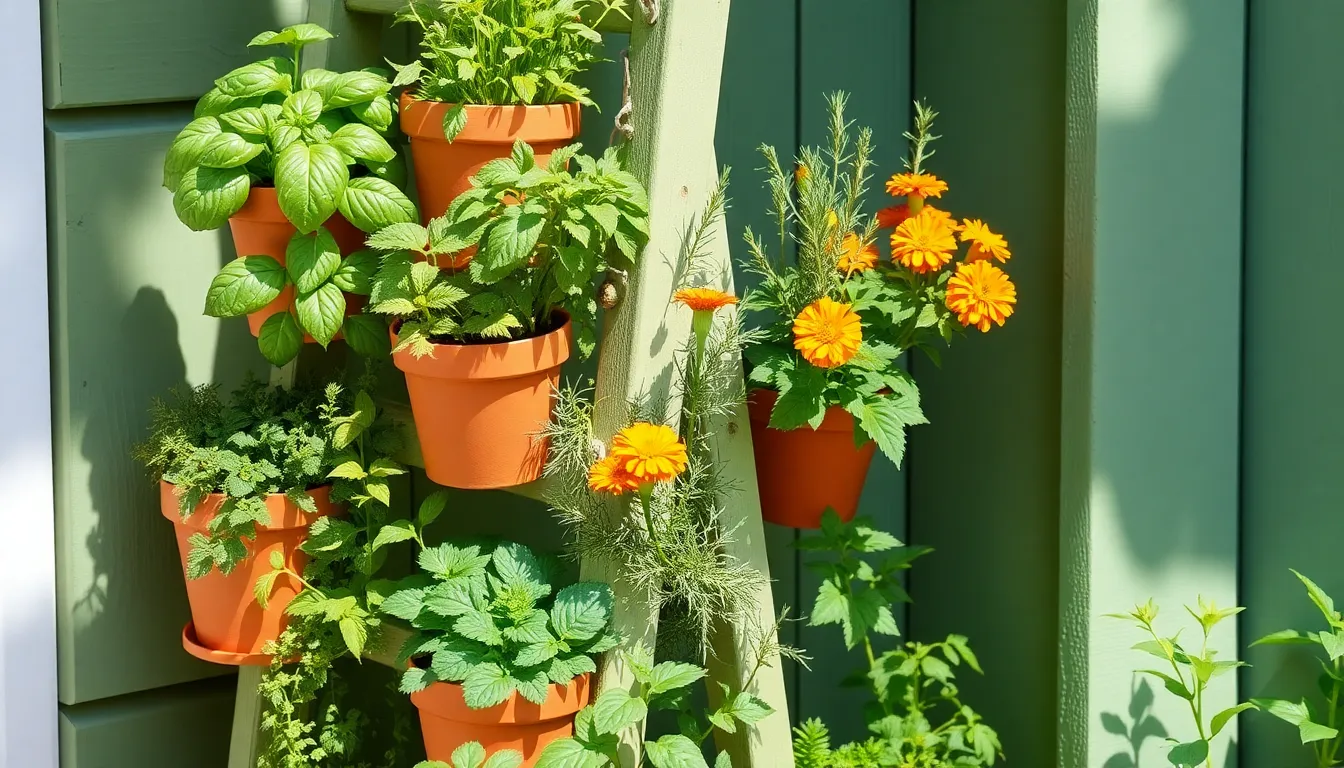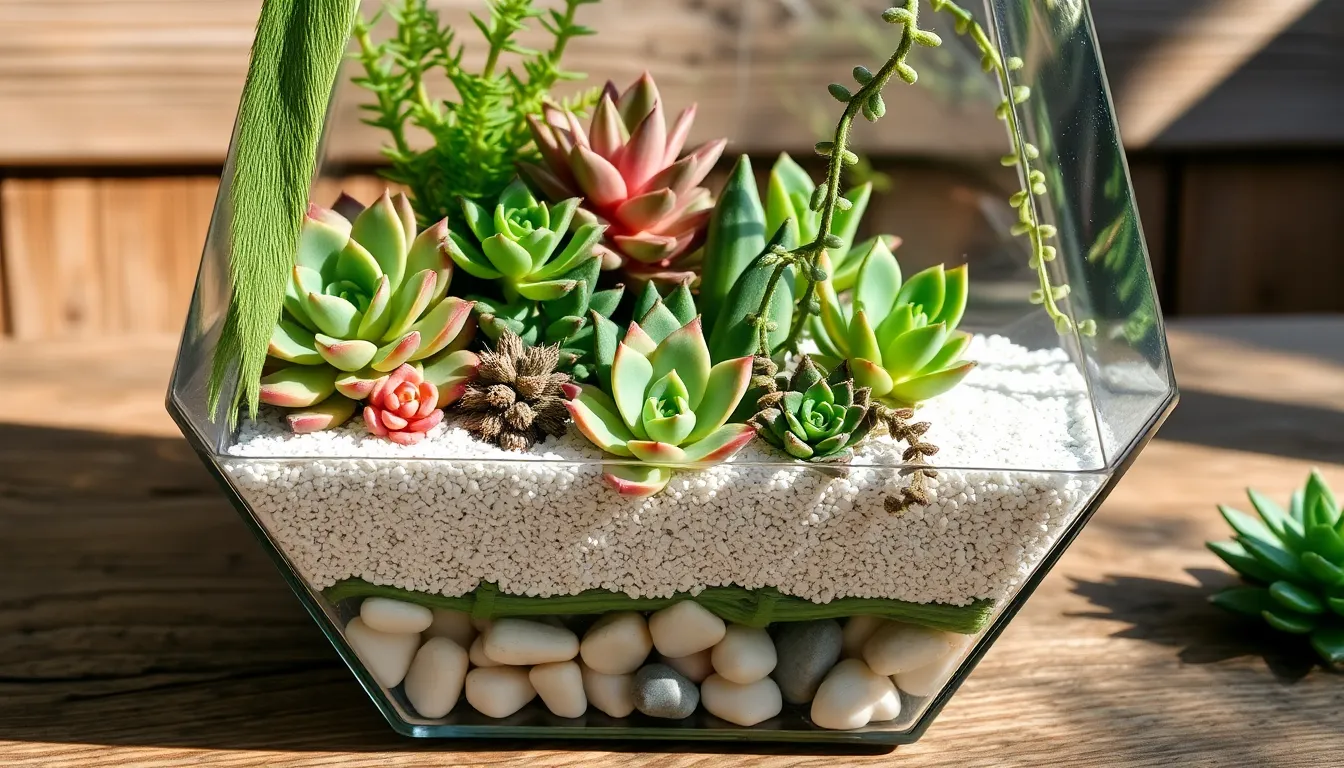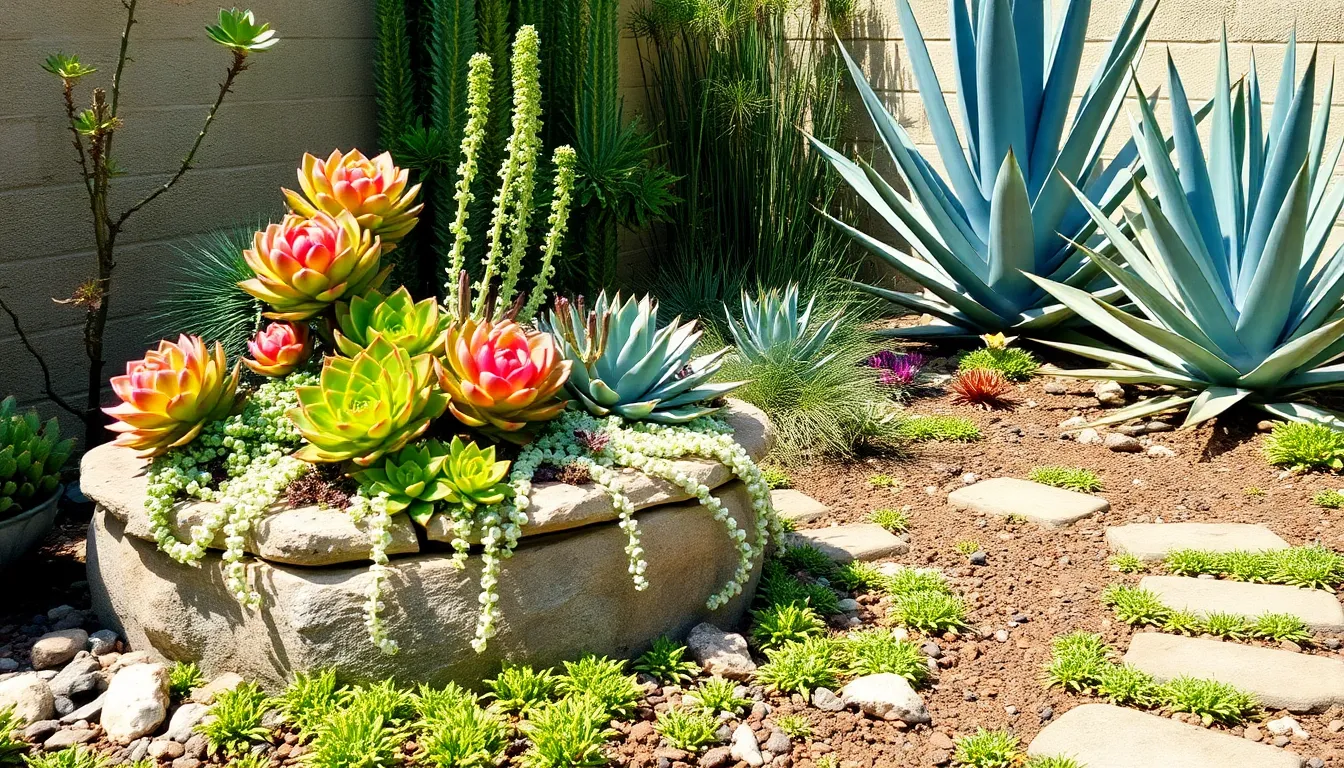Imagine stepping out onto your balcony or into your kitchen and being greeted by a lush, aromatic wall of herbs, ready to elevate your culinary creations. Whether you’re a seasoned gardener or just starting out, building a vertical herb garden can be an exciting and rewarding project that transforms even the smallest of spaces into a vibrant, living tapestry.
For those new to gardening, a vertical herb garden offers a manageable, space-saving solution that brings the joy of fresh herbs within arm’s reach. Experienced gardeners will find that vertical gardening presents an opportunity to expand their creativity and maximize growing potential, even in limited areas.
In this article, we’ll explore the essential steps to design and construct your very own vertical herb garden, from choosing the right location to selecting the perfect herbs. You’ll discover practical tips on maintaining your garden, ensuring it thrives through the seasons, and learn how to integrate it seamlessly into your lifestyle. Let’s dig in and cultivate a green sanctuary that delights both the senses and the soul.
Select a Suitable Wall Space
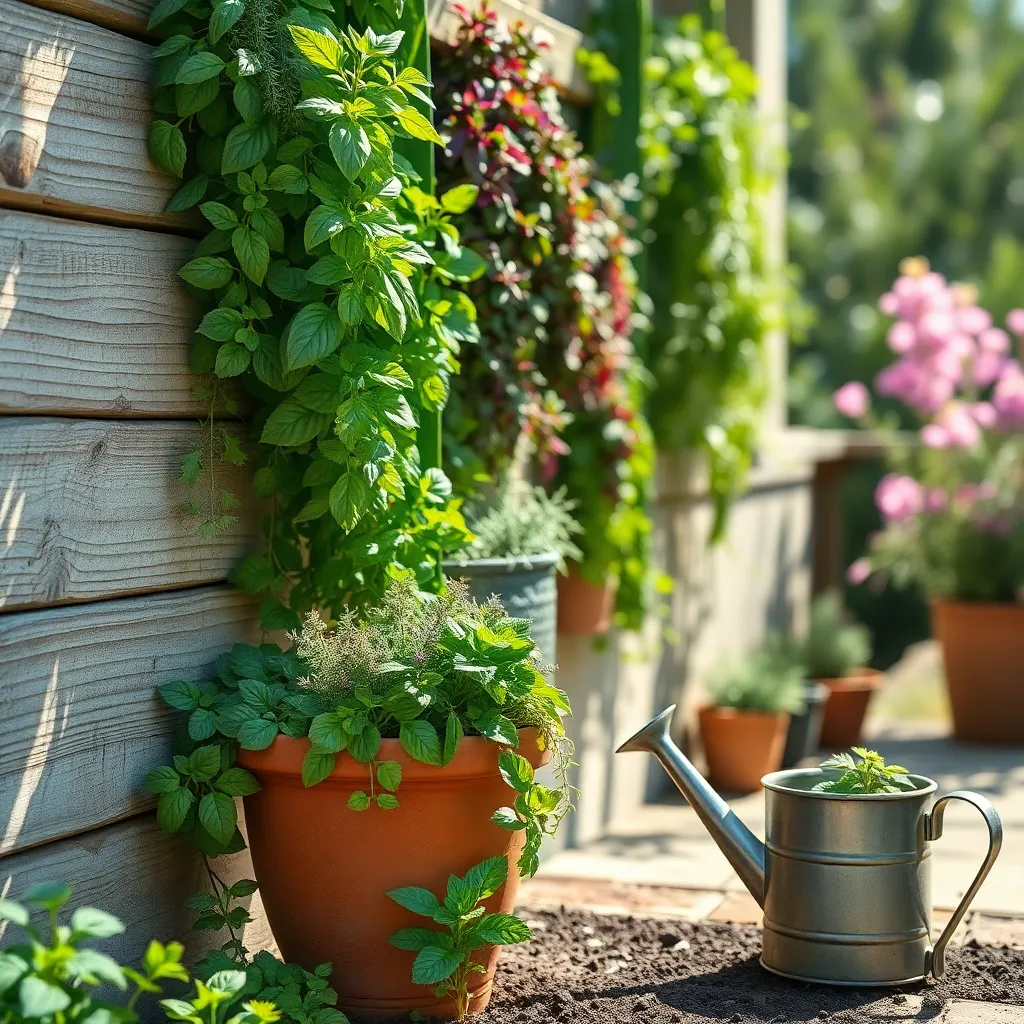
Choosing the right wall space is crucial for a thriving vertical herb garden. Begin by identifying a wall that receives at least six hours of direct sunlight each day, as most herbs like basil, thyme, and rosemary require ample light to flourish.
Consider the wall’s exposure to the elements, since too much wind can dry out your herbs quickly. Installing a windbreak, like a trellis or lattice, can help protect your plants from harsh conditions, ensuring they remain healthy and vibrant.
Additionally, ensure the wall surface can support the weight of your vertical garden structure. Opt for sturdy materials like brick or wood, and use appropriate anchors and brackets to secure your garden safely.
For those short on space, a sunny kitchen or balcony wall can be an excellent alternative. Just be sure to choose a location where you can easily water and harvest your herbs, keeping them within arm’s reach for convenience.
Choose Appropriate Herb Varieties
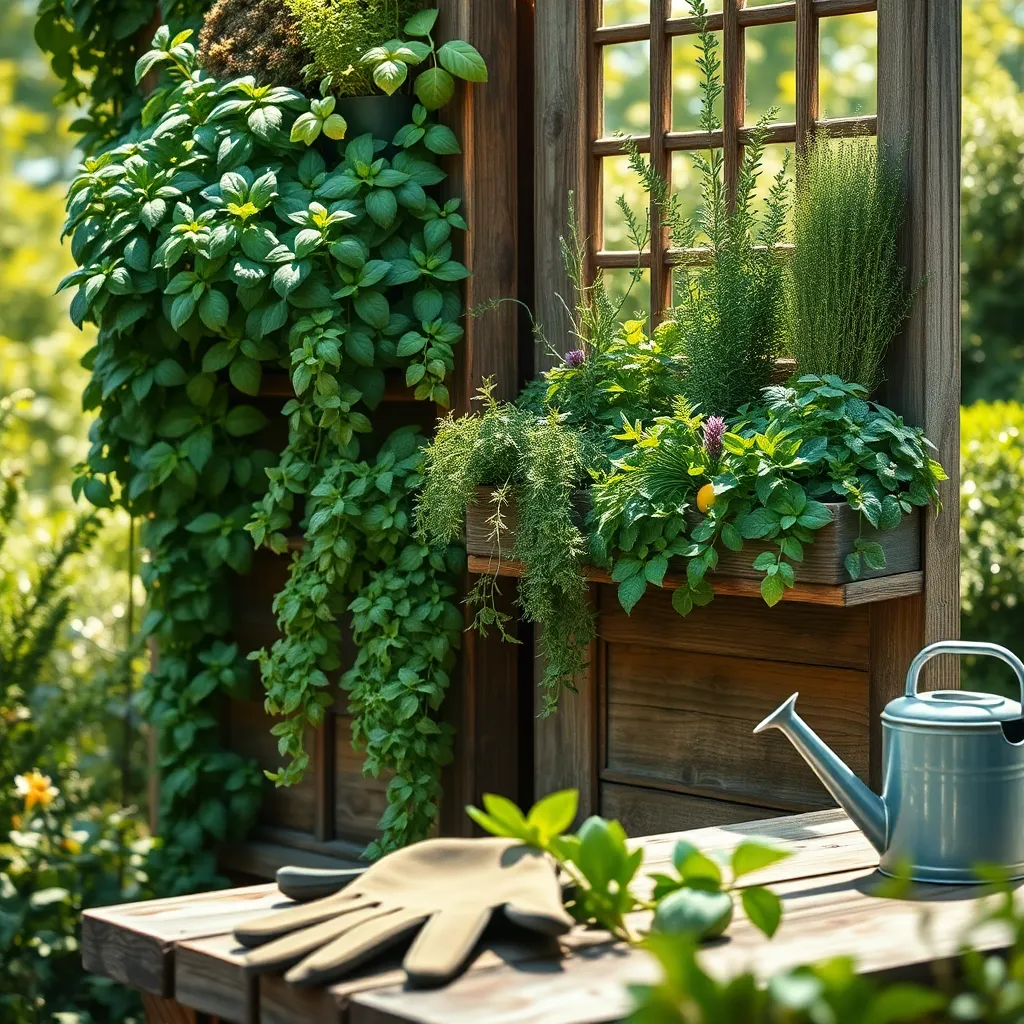
When choosing herb varieties for your vertical garden, consider the specific growing conditions of your chosen wall space. Herbs like basil, parsley, and cilantro thrive in full sun, while others such as mint and chives can tolerate partial shade.
It’s essential to select herbs that suit your culinary preferences and gardening experience. Beginners might start with easy-to-grow varieties like thyme or oregano, which require less water and care than more delicate herbs.
Evaluate your climate and plan for seasonal changes to ensure continuous growth. In cooler climates, consider hardy perennial herbs like rosemary and sage, which can withstand lower temperatures when properly mulched.
To ensure healthy growth, use a high-quality potting mix that retains moisture but drains well. Incorporate organic matter or compost to provide essential nutrients, and ensure consistent watering to prevent soil from drying out.
Advanced gardeners might experiment with companion planting techniques. Pairing certain herbs together, such as basil and tomatoes, can enhance growth and deter pests naturally, making your vertical herb garden more productive.
Install Sturdy Support System
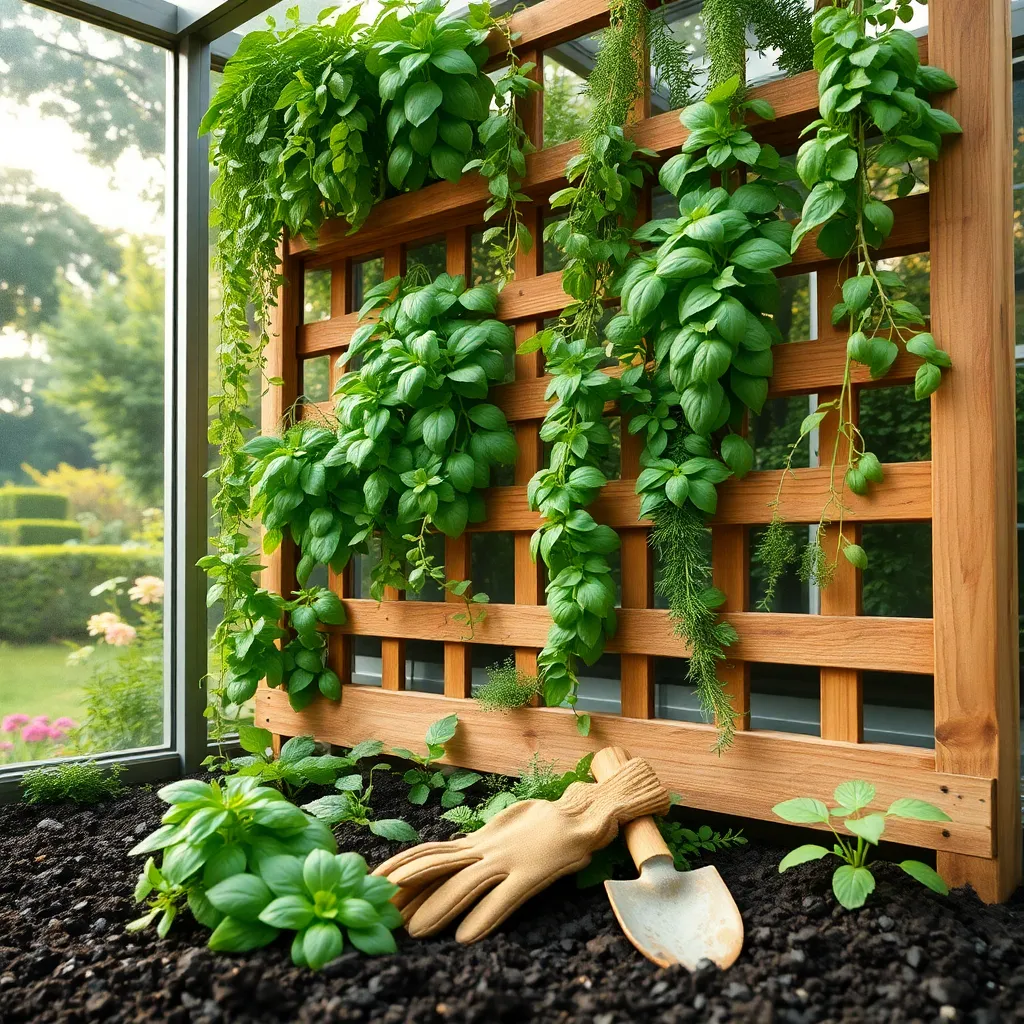
To ensure your vertical herb garden thrives, installing a sturdy support system is crucial. A well-designed support structure will not only keep your plants upright but also allow for better air circulation and sunlight exposure.
Consider using materials such as metal grids, wooden trellises, or even repurposed ladders for a creative touch. These materials should be weather-resistant and strong enough to bear the weight of mature plants and containers.
Make sure to securely anchor your support system to a stable surface like a fence or a wall. This will prevent any tipping or collapse during windy conditions or when the plants become heavier.
For those with some DIY experience, building a custom support system tailored to your garden space can be both rewarding and practical. Utilize galvanized screws and brackets to ensure a long-lasting and reliable structure.
When arranging your herbs, place heavier plants like rosemary or sage lower down to maintain balance. Lighter herbs such as basil or cilantro can be positioned higher, ensuring they don’t overshadow smaller plants.
Regularly check the stability of your support system, particularly after harsh weather. Tighten any loose fittings and replace any damaged parts to keep your garden safe and thriving.
Arrange Containers for Maximum Sun
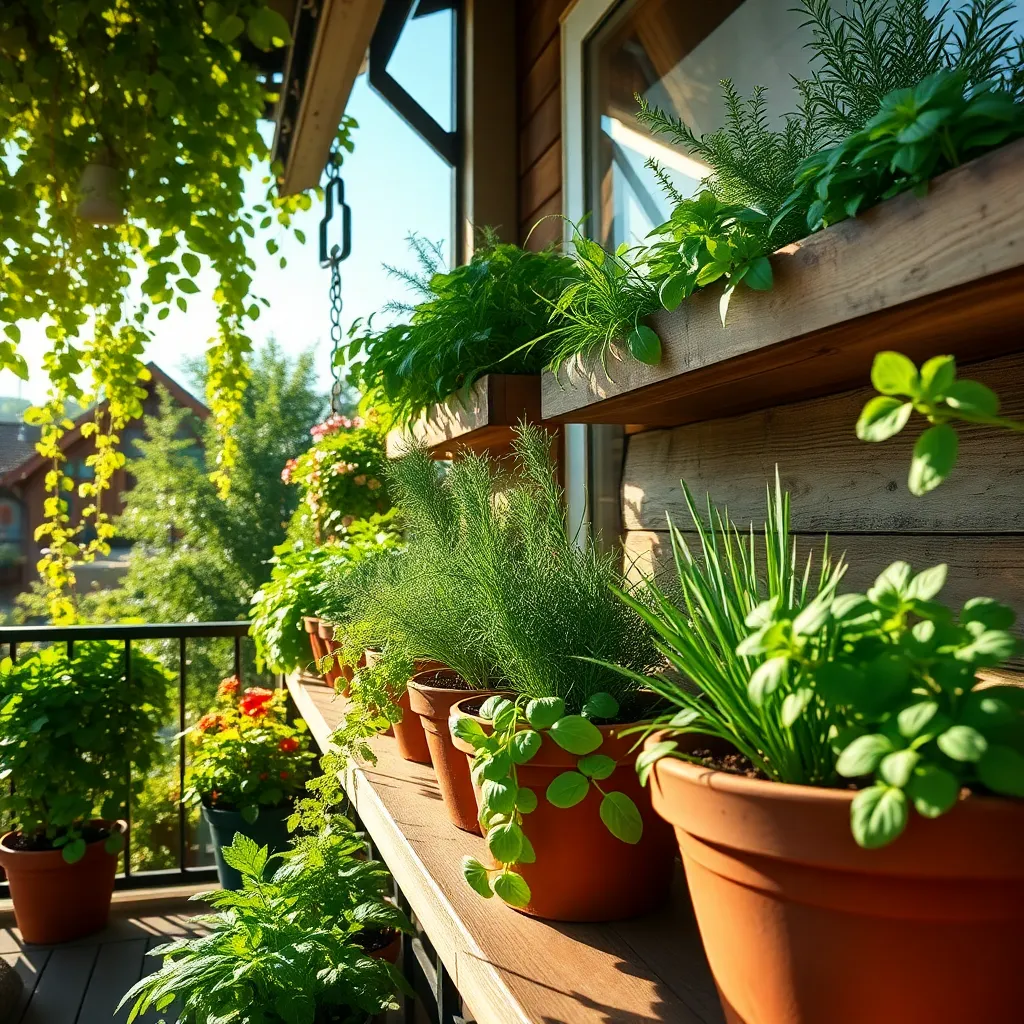
When arranging containers for maximum sun exposure, consider the natural light patterns in your space. Observe how sunlight moves throughout the day and place your vertical garden where it receives at least six to eight hours of direct sunlight, which is essential for most herbs.
Position taller containers at the bottom to avoid casting shadows on smaller plants. This ensures that each herb gets its fair share of sunlight, promoting healthy growth and vibrant foliage.
For beginners, using a movable setup can be beneficial. Try placing your containers on wheeled racks or platforms, allowing you to adjust their position as the seasons change and the sun’s angle shifts.
Advanced gardeners might consider using reflective surfaces to amplify available light. Placing mirrors or light-colored surfaces near your garden can help redirect sunlight to lower or more shaded areas, maximizing the light your plants receive.
To ensure proper growth, regularly check the soil moisture as containers can dry out faster in sunny spots. Use a well-draining soil mix and water frequently, ensuring the soil remains consistently moist but not waterlogged.
Plant and Water Herb Seeds
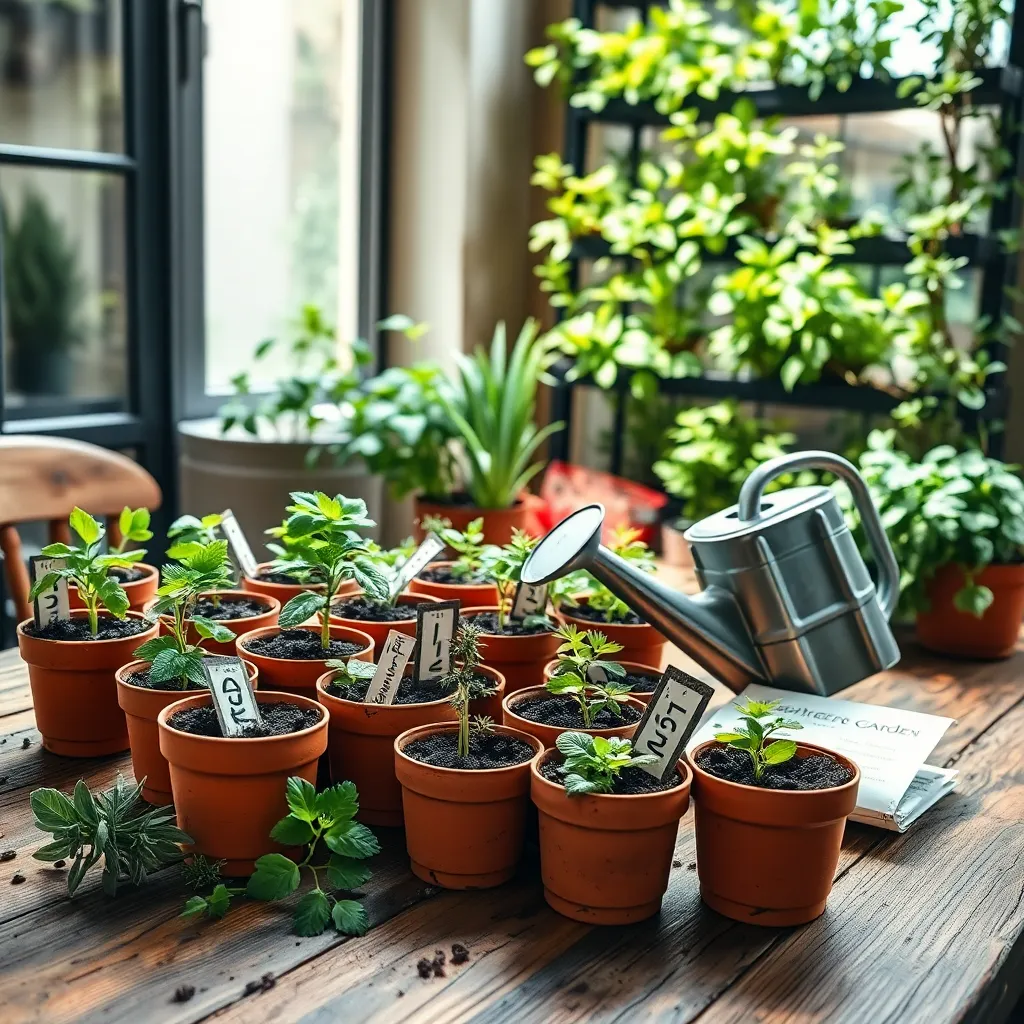
Once your containers are positioned to maximize sunlight, it’s time to plant your herb seeds. Start by selecting a high-quality potting mix that is well-draining, as herbs generally prefer soil that doesn’t retain too much moisture.
You should plant the herb seeds according to the depth specified on the seed packet, usually about twice the diameter of the seed. Cover them lightly with soil, and gently water them to ensure good contact between the seeds and the soil surface.
For optimal germination, keep the soil consistently moist but not waterlogged. It’s crucial to use a spray bottle or a watering can with a fine rose to avoid displacing the seeds with a strong stream of water.
Different herbs have varying moisture needs; for example, basil and cilantro thrive with regular watering, while rosemary prefers drier conditions. To enhance your gardening skills, consider using a moisture meter to gauge when your plants need water, ensuring you meet each herb’s specific requirements.
Conclusion: Growing Success with These Plants
In our exploration of building a vertical herb garden, we uncovered five essential relationship concepts: trust, communication, nurturing, balance, and growth. Trust is like the soil that anchors your plants, providing a stable foundation. Communication acts as the water that sustains life, ensuring every leaf and stem thrives. Nurturing your garden with care reflects the love and attention relationships need to flourish. Balance is key, just as sunlight and shade must be harmonized for optimum growth. Finally, growth symbolizes the ongoing journey of learning and evolving together.
Your next step is simple: choose one herb to plant today and discuss its meaning with your partner, letting it symbolize a shared goal or value. This tangible step can deepen your connection and create a living reminder of your relationship journey.
Remember, successful relationships are cultivated over time, much like gardens. Bookmark this article to revisit these foundational principles whenever you need guidance. By embedding these concepts into your everyday life, you’re not just growing a garden—you’re sowing the seeds for a thriving relationship. Embrace this opportunity for growth, and watch both your garden and your partnership blossom.

